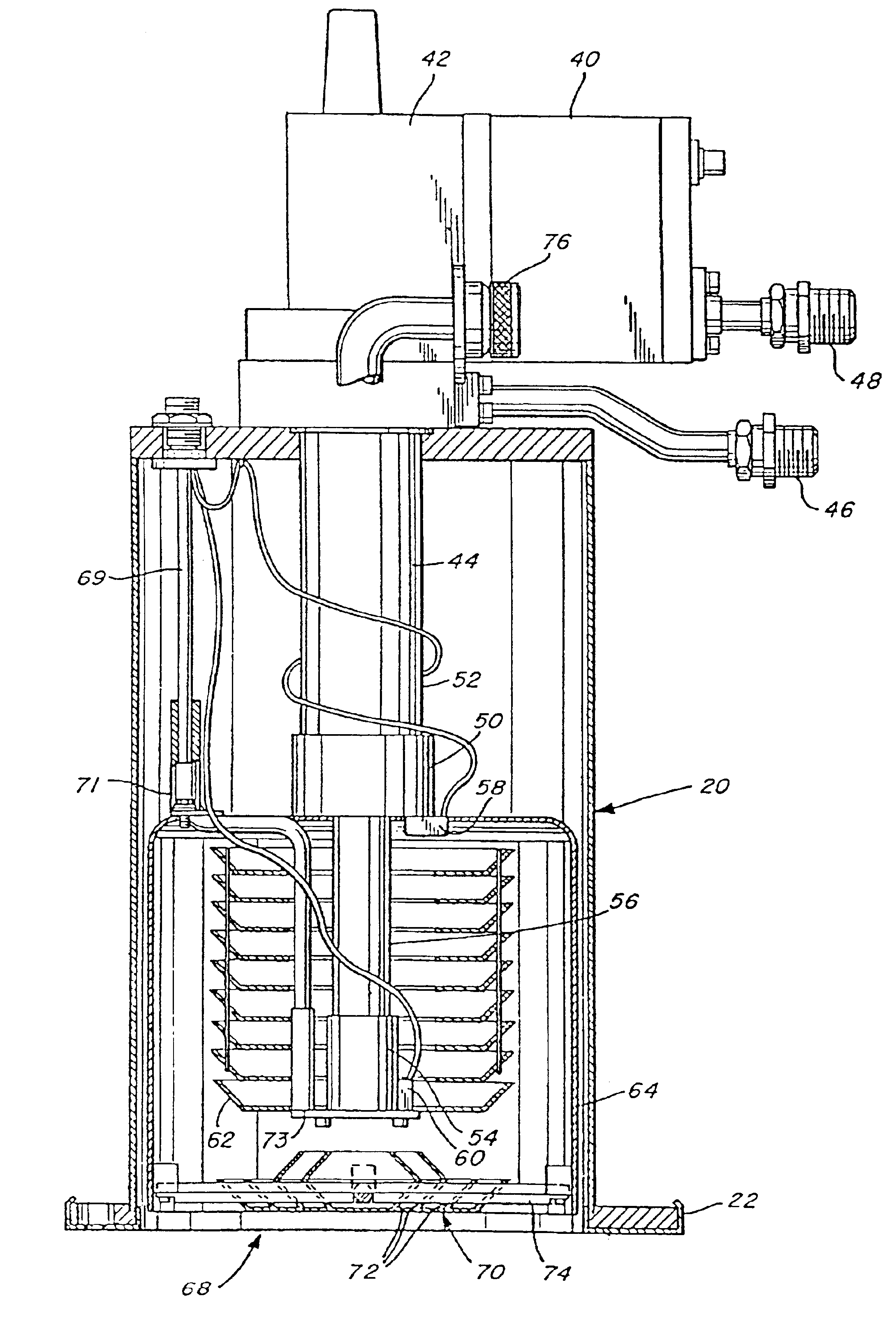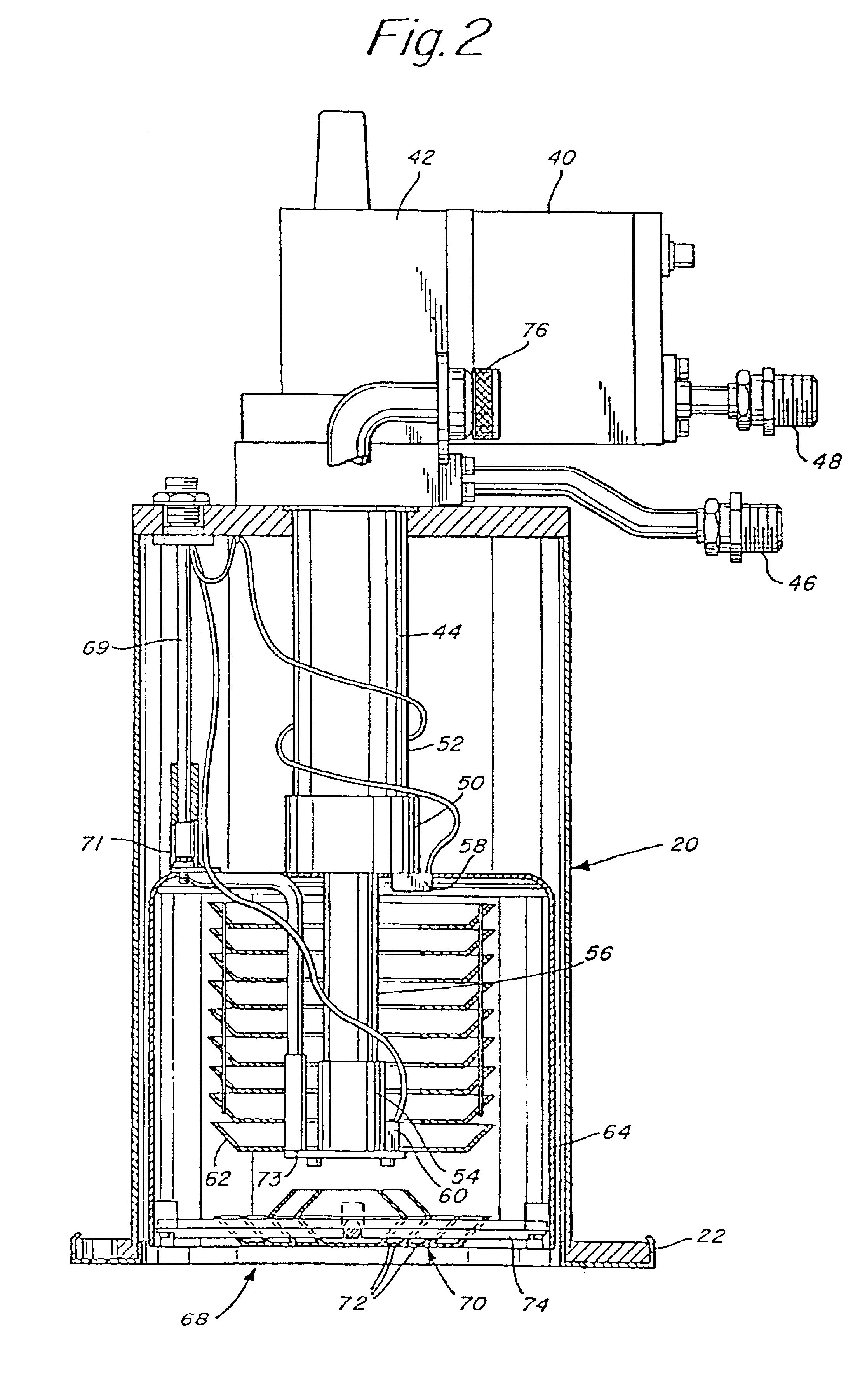Electronically controlled vacuum pump
a vacuum pump and electric motor technology, applied in the direction of axial flow pumps, non-positive displacement pumps, fluid engines, etc., can solve the problems of affecting the operation the gas as being pumped by the turbomolecular pump may be extremely corroded or hazardous, etc., to facilitate the enhancement of individual pumps, improve the efficiency of the vacuum pump, and reduce the burden on the central computer
- Summary
- Abstract
- Description
- Claims
- Application Information
AI Technical Summary
Benefits of technology
Problems solved by technology
Method used
Image
Examples
Embodiment Construction
[0051]A description of preferred embodiments of the invention follows.
[0052]FIG. 1 is an illustration of a cryopump embodying the present invention. The cryopump includes the usual vacuum vessel 20 which has a flange 22 to mount the pump to a system to be evacuated. In accordance with the present invention, the cryopump includes an electronic module 24 in a housing 26 at one end of the vessel 20. A control pad 28 is pivotally mounted to one end of the housing 26. As shown by broken lines 30, the control pad may be pivoted about a pin 32 to provide convenient viewing. The pad bracket 34 has additional holes 36 at the opposite end thereof so that the control pad can be inverted where the cryopump is to be mounted in an orientation inverted from that shown in FIG. 1. Also, an elastomeric foot 38 is provided on the flat upper surface of the electronics housing 26 to support the pump when inverted.
[0053]As illustrated in FIG. 2, much of the cryopump is conventional. In FIG. 2, the housin...
PUM
 Login to View More
Login to View More Abstract
Description
Claims
Application Information
 Login to View More
Login to View More - R&D
- Intellectual Property
- Life Sciences
- Materials
- Tech Scout
- Unparalleled Data Quality
- Higher Quality Content
- 60% Fewer Hallucinations
Browse by: Latest US Patents, China's latest patents, Technical Efficacy Thesaurus, Application Domain, Technology Topic, Popular Technical Reports.
© 2025 PatSnap. All rights reserved.Legal|Privacy policy|Modern Slavery Act Transparency Statement|Sitemap|About US| Contact US: help@patsnap.com



